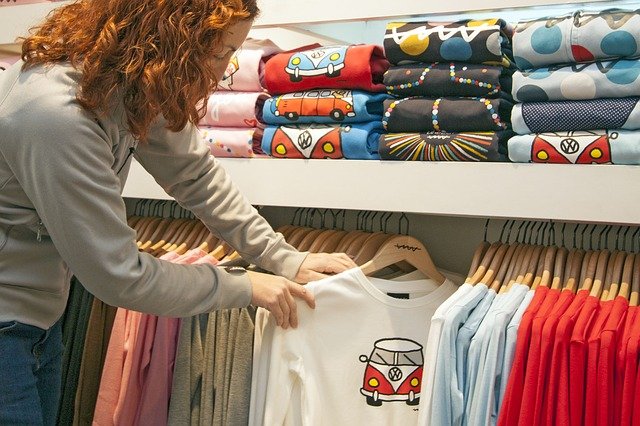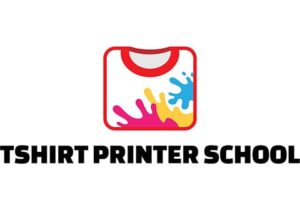You’re graduating from selling with print-on-demand services, and you’re ready to start printing for yourself. You’ve already picked up the right heat press, and now you need to know what the right t shirt size distribution is to get you started.
For most t shirt business owners, an important step to start your t-shirt company off on the right foot is to figure out what sizes to carry. If you’re carrying men’s and women’s t-shirts, for example, you need to know how many different sizes (small, medium, large etc) and colors (red, blue, black) you want in your inventory.
Eventually, you’ll get a feel for buying inventory for the unique ebb and flow of your business, but figuring out what t shirt size breakdown will work best for your business right now can be confusing!
Here is some advice on how to determine which order shirts without breaking your bank. Stick around to the end of the article to get some extra tips.
What t shirt size distribution should you order for your t-shirt business?
The best-case scenario for t-shirt size distribution is to have a variety of sizes available so when a t shirt order comes in for a particular size t shirt you can print fast, and get that shirt to your happy customer
Here is a basic rule of thumb for ordering blanks if you have NO idea what the average sizes of your potential customers are.
If you are ordering 100 shirts order:
- 10 Small
- 25 Medium
- 30 Large
- 30 XLarge
- 5 2XL
Bonus: (the three in the middle can be adjusted for the audience. For example, a 5k run shirt orders more mediums and larges. For family reunion tees go bigger, etc.
Don’t concern yourself right away with shirts that are the largest sizes. Think 3XL through 5XL. It’s possible a customer will request that size, at which point you can order it. Let them know there will be a longer delay for that order.
The style of t shirts is important, but don’t worry too much when you are first starting.

Men’s shirts and unisex shirts are pretty universal. It’s good to be aware of the specialty shirts and to think about ordering them when you start to get orders in and can gauge your audience more accurately.
If you are selling for an event that is likely to have been made up of a particular demographic order shirt syles appropriately.
For example, if you are ordering for a yoga retreat you might want to focus on slimmer fit blanks with more medium shirts with more female styles. If you are going to be at a children’s event don’t bring only adult sizes. Selling to football fans? You might want to order a bit larger?
If you have a design that you notice is selling to primarily female shoppers feel free to start adding a female shirt style.
In general, if you start with just one type of tees but three different sizes (e.g. small, medium, and large) you’ll be able to gauge how well the product sells before deciding if additional colors or styles should be added to your line.
How to figure out the t shirt size breakdown for your brand once you get going

What we just outlined above are great defaults to get you going, but if you want to be successful you need to know how to start to modify your orders for your company.
Here are some quick questions to get you started when looking through your sales data:
1. What sizes are selling most for which designs?
2. Is there a design selling so well you should try adding different styles?
3. Are your shirt orders made up of a particular demographic?
4. What are the most common sizes you are actually selling?
Should you be adding variety or stick to popular sizes?

\\You need to think about what most people ordering from you are more likely to wear and try to order the right ratio. What I’m going to tell you below should help you.
TLDR don’t worry too much about getting this wrong.
Some brands get super focused on this, but when you are first starting stay basic. There is no doubt though, getting this right can take you to the next level.
The advantages of carrying a variety of shirt sizes in your inventory

When you carry a variety of shirt sizes in your inventory, you are giving your customers more choices. This can be helpful especially if they cannot find what they are looking for at other stores. When you offer different colors and styles, you are also increasing the chances that someone will find something they like and want to buy.
Another advantage of carrying a variety of shirt sizes is that it allows you to appeal to a wider range of customers. Some people may not feel comfortable wearing a shirt that is too tight or too loose, so carrying different sizes can help them feel more comfortable about making a purchase.
It’s also important to note that not everyone fits into the most common shirt sizes. Carrying larger sizes smaller sizes can help accommodate all of your customers.
Of course, as noted above, you don’t want to carry items you can’t sell. You’ll need to find the balance for your audience. Typically people don’t like to order on delay, but if it’s a specialty item they may be willing to. You’ll have to make that call.
Why it’s important not to overstock certain sizes because they will be sitting around collecting dust until someone buys them!
On the other hand, as a counterpoint to the advantages listed above, it’s important to think about why we might NOT want to carry extra special sizes.
When stocking your store with t-shirt sizes, you don’t want to overbuy. When first getting started you have so many things you will want to put your money towards, you don’t want it sitting in unused blanks.
My advice, focus on popular sizes, and the distribution we discussed above. Add the specialty sizes as you learn more about your audience. You’ll see increased revenue as you add, but taking it slow will help.
Here are the tips I promised you:

- I always order at least two extra shirts per size. Random holes and bad sewing shows up, and sometimes mistakes happen, and there are printing errors. You don’t want to be down on shirts when you are sending out your order.
- Depending on how close you are to your distributor it takes time to get your shirts. I’ve seen some people say they get theirs in two days. I’m not that close, so it takes about a week for shirts to arrive. Plan accordingly.
- Basic colors usually ship faster, specialty styles and odd colors take longer. Your distributor is just like you. They play the numbers games too.
- Order smart when holidays are coming up. Even if you aren’t selling a holiday design popular colors will go out of stock. Red and blue shirts during 4th of July, Green shirts during Christmas and St. Paddy’s day, black shirts before Halloween.
Use this information to set your t shirt business off to a great start!
It’s important to carry a range of sizes in your business, but it can be confusing when you’re not sure what size distribution makes the most sense. We’ve given you a pretty good place to start.
With this information, we hope that ordering more varieties or quantities won’t overwhelm you to start. As you get going you’ll know which ones make the most sense based on the questions we’ve provided above.
Lastly, remember don’t feel bad when you miss the mark. We’ve all done it, it’s a part of the business. The mistakes we made helped us provide you with this article. Good luck!
If these resources have been helpful please share them with friends who might also benefit!

